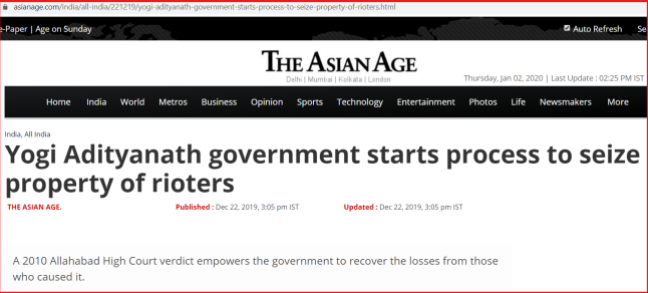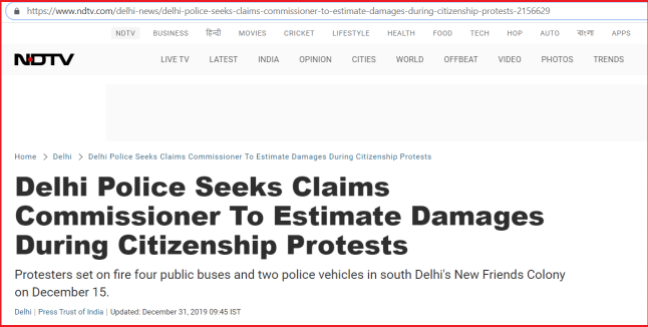For over two weeks following the passage of the Citizenship Amendment Act (CAA), India witnessed rioting and violence on an unprecedented scale especially in Yogi ruled UP. From burning trains to pelting school buses with stones, from hate speeches (disguised as poems) to cornering policemen and trying to lynch them. Every rule of civilized society was broken as the anti-CAA rioters set about on their mission to overturn our democratic mandate with raw street violence.
The biggest, most disturbing takeaway here is this: urban riots have made a roaring comeback in modern India.
For a while now, it was assumed that due to the proliferation of technology, the urban riot was on its way out. After all, when there is a smartphone in every hand and CCTV in every corner, who could expect to stay anonymous in a mob? It was believed that with 24 x 7 cable news, rioting would quickly bring shame and stigma. The media and public outcry would be such that wanton violence would become politically unprofitable.
In the second half of December 2019, we have seen this belief turned on its head. The rioting went on and on, with much of the media actively cheering them. Sections of civil society often conferred a moral halo upon the rioters. Hate speech was characterized as “revolutionary poetry.” Rioting and stone-pelting were described as dissent. Fake news was systematically manufactured to malign police. Only yesterday, a man who called for the assassination of the Prime Minister was described by one of India’s most prominent news channels as a mere “scholar.”
The urban riot is back with a bang and the anti-CAA crowd has shown that it can be done. Not just that, rioters can expect to be glorified in domestic and international media, as well as academic and civil society circles. Nothing good can possibly come of this.
But there is some hope and it came out of Uttar Pradesh. This is where some of the worst violence had happened.

In one word: consequences.
And now everyone wants to get in on this idea. First, it was the Railways.

Now, the Delhi Police wants the same.

It is heartening to see a good idea spread so quickly through the system.
From the point of view of a thug, rioting used to be a relatively risk-free activity. Given our weak police force, they would likely not get identified anyway. Even if they were, the worst that could happen would be a few hours at the police station. Then, they get out. The case gets buried along with literally crores of other cases pending in the judicial system.
Until now. The Uttar Pradesh government moved to extract an immediate price from those accused of rioting. Suddenly, the incentive structure changed. Even if the actual number of recoveries is tiny, it has a much larger chilling effect on wannabe rioters everywhere.
And it worked. The anti-CAA rioting in Yogi ruled Uttar Pradesh stopped as suddenly as it had begun. Because the incentive structure for rioters had been turned around on its head. Incentives matter.
One thing is now clear. We cannot depend on media coverage to shame rioters into stopping the violence. It was an ad hoc solution anyway, a “jugaad” to compensate for the fact that India is a soft state with underpaid, ill-trained and unmotivated police.
Instead, Yogi Adityanath is using the instruments of the state to finally fulfil one of the fundamental functions of government: protecting the life and property of citizens. It is time for other jurisdictions to pick up this new way and make it count. It will go a long way to restore the supremacy of the law.



